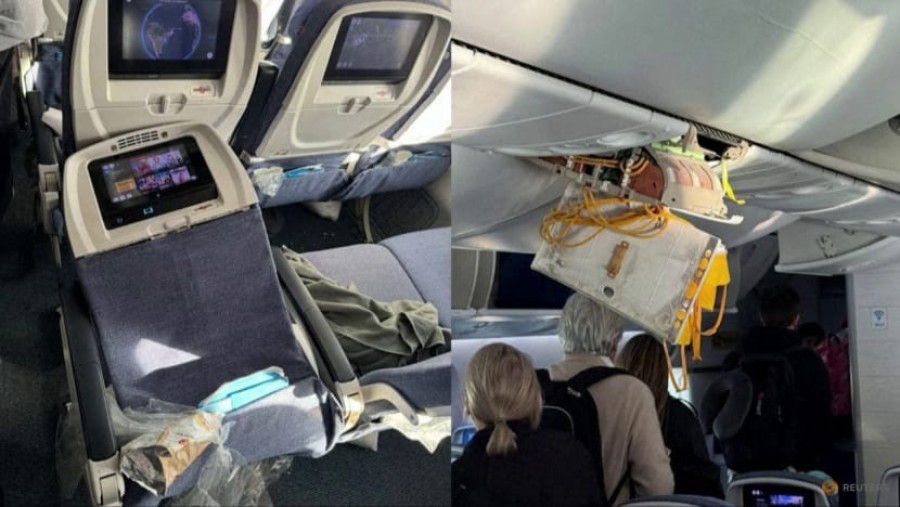Air Europa Flight Diverted to Brazil After Turbulence; 30 Injured

Dozens of passengers were injured on Monday (Jul 1) when an Air Europa flight from Madrid to Montevideo, Uruguay, hit strong turbulence, prompting an emergency landing in Brazil.
Flight UX045 with 325 people on board was diverted in the early morning hours to the airport of Natal in northeast Brazil, where more than a dozen ambulances waited.
Forty passengers were taken to hospitals and clinics in Natal for treatment of "abrasions and minor traumas", the health secretariat of Brazil's Rio Grande do Norte state told AFP.
Eleven remained hospitalised at the Monsenhor Walfredo Gurgel hospital by Monday afternoon. Among the injured were nationals of Spain, Argentina, Uruguay, Israel, Bolivia and Germany.
Air Europa earlier said seven passengers had been treated for "various injuries" while an undisclosed number received medical attention for bruises. It added a plane was being sent from"HIT THE CEILING"
X user Mariela Jodal, who said she was among the passengers, wrote on the platform that several people were injured in "very strong turbulence", but she was spared "thanks to the seat belt".
Images she posted showed broken ceiling panels, with pipes and wires visible, while one photo showed emergency vehicles with flashing lights waiting on the tarmac in Natal.
Another passenger, who identified himself as Maximiliano from Spain, said the plane "destabilised and went into a dive".
"The people who didn't have seat belts went up in the air and hit the ceiling, and they got hurt - those who had seat belts on, not so much. Then we landed here as an emergency. They helped us on the runway. We were on the plane for three or four hours without being able to move. Then we got off the plane, and we were here, and they didn't give us much information," he added.
In May, a 73-year-old British man died and several other passengers and crew suffered skull, brain and spine injuries when a Singapore Airlines-operated Boeing 777 hit severe turbulence on a flight from London and was forced to make an emergency landing in Bangkok.
A week later, 12 people were injured during turbulence on a Qatar Airways Boeing 787-9 flight from Doha to Ireland.
CLIMATE CHANGE
Air safety experts say passengers are often too casual about wearing seatbelts, leaving them at risk if the plane hits unexpected turbulence. Scientists also say that so-called clear air turbulence, which is invisible to radar, is getting worse because of climate change.
A 2023 study found the annual duration of clear air turbulence increased by 17 per cent from 1979 to 2020, with the most severe cases increasing by more than 50 per cent.
Monday's incident was the latest drama involving a Boeing plane, as the manufacturer faces intense scrutiny following a near-catastrophic event in January, when a fuselage panel blew out of an Alaska Airlines-operated 737 MAX.
That renewed concerns over the company's safety and manufacturing standards which had been raised following two fatal MAX crashes in 2018 and 2019.
In March, the US aviation giant announced the impending departure of CEO Dave Calhoun.
